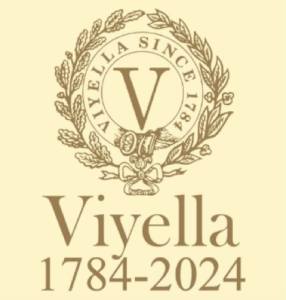
1784
Founded in 1784 by Henry Hollins with four partners. The Company’s tradition was concerned with spinning yarn for Nottingham hosiers, but gradually the luxury silk was eclipsed for similar natural fibres, like fine worsted and cottons.
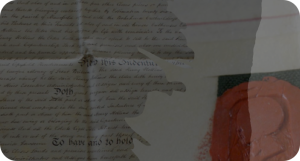
1830
The Company acquired the freehold of Pleasley Vale.
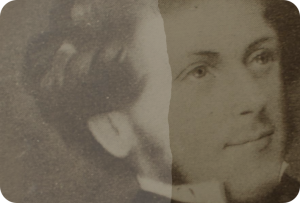
1840
Henry Hollins’ grandson, William, joined the company at the age of 25. William Hollins became the future name of Viyella’s holding company.

1851
The Company participated in the Great Exhibition displaying not only Merino yarns but cashmere, cotton and silk. It was also announced at this time that the Company would diversify into sewing thread and knitting wool.

1890
Over the years, the Company gained an unrivalled reputation for blending yarns and in particular, a unique blend of two of the finest natural fibres – merino wool and long staple cotton, which made the new yarn comfortable and hard wearing. Recognising the market trends for finer yarns, Henry had a fascination of developing a cloth, blending the softness of fine Merino Wool with cotton in a fine, yet densely woven construction. Two seemingly incompatible fibres, soft wool and crisp cotton, could be spun into one yarn. Now, Hollins sought to weave the yarn! Trials began.

1891
The two experimented widely with different weavers. It was not until the brothers met John Douglas, a weaver at McMath & Co of Glasgow, that the realisation came.
It took two further years to perfect the formula, but by the end of 1893, Hollins knew that with this unique blend there was no looking back.
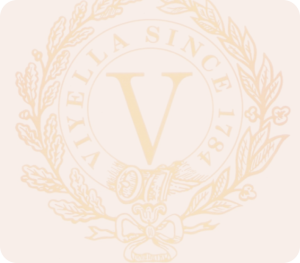
1894
The Viyella name was first registered in 1894, a highly innovative idea at the time…
It rapidly became the most famous and coveted cloth in the World, renowned for its durability and softness and the remarkable way the fabric improved with age.

THE VIYELLA SYMBOL
Four elements are combined to reflect the traditional values of Viyella.
Framing the classic Roman ‘V’ are leaves from the Oaks of Sherwood Forest – reputedly the domain of Robin Hood, and close to the original mills.
The laurel leaves are those of the victors’ crown and the date 1784 – the year the Viyella heritage took root.
This symbol of excellence is perpetuated in Viyella products, packaging, advertising and promotional material throughout the world.

1896
A wide export market began, particularly to the English-speaking Countries. By 1896, the Company was achieving International acclaim. Viyella was awarded a Gold Medal at the Brussels Exhibition. Willam B Furley, a Company salesman, waxed lyrically on the subject, singing its praises…
For cycling and tennis, the long-sought ideal For bathing and fishing, for seaside and boating, For tailor-made dresses, and smart winter coating, For layettes and lingerie, Gowns, frocks and trousseau, Once buy it and try it, For ever you’ll do so, From Grandson to Grandpa, From Baby to Grandma, Viyella forever And long may it be so
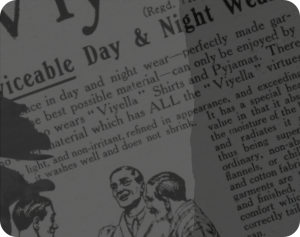
1903
Radford garment factory had started. Once again, aware that lack of control could reflect adversely on the brand, the Company itself started manufacturing Viyella garments. The first garments made in the new cloth were Men’s shirts and nightwear in addition to Women’s blouses.

1907
Hollins bought Alexander McNab & Co, weavers at Boden Street, Glasgow, into their Empire. A hosiery warehouse was established in London.

1928
Seedhill Finishing Plant in Paisley was acquired, which concentrated on the advancements in fabric finishing. This was a key area of importance to the Company, to maintain quality control. At Seedhill, laundering replaced the traditional handwashing of fabric and it had to endure higher water temperatures.

1937
The Head Office in Castle Boulevard, Nottingham, was built…
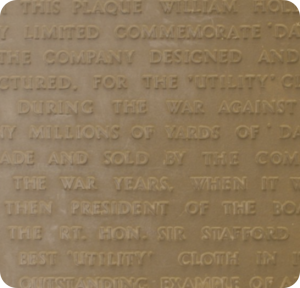
1950s
New Factories in Hucknall were acquired to increase capacity. Viyella was now being sold in over 58 countries.
Edward Herbert was knighted, in appreciation of his efforts during World War II, where he was seconded to take control of British aircraft production
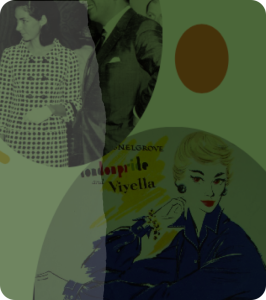
1970s
Viyella gained a high profile on London catwalks, with Mary Quant and Wendy Dagworthy. Viyella also featured across other catwalks, including Paris with Yves St Laurent, Nina Ricci and many other Designers choosing Viyella.
Mary Quant launches her first range for Viyella, under the brand name of ‘London Pride’. Established by Viyella as a wholesale brand, ‘London Pride’ sold Womenswear and Shirts using Viyella fabric to the ‘independent’ retail sector.
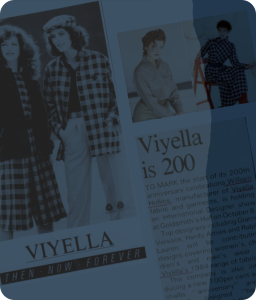
1984
The Bicentennial of the origins of the Viyella Brand on October 5th, saw a spectacular event at the Goldsmiths Hall, as part of the Brand’s Campaign. Top Designers including Gianni Versace, Hardy Amies and Ralph Lauren contributed designs over Men’s, Women’s and Childrenswear from the 1984 fabrics Collection. The BBC devoted prime time television to the occasion. The year-long advertising campaign “THEN * NOW * FOREVER” ensued. A specially designed ‘House Check’ marked the event.
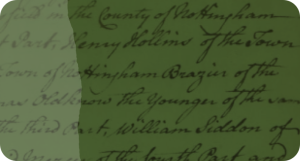
1785
The Company built a mill on land they had leased in Pleasley Forge.

1838
The year of Queen Victoria’s Coronation – power was first applied to knitting frames, creating a demand for cotton yarns.

1844
The mill caught fire and burnt to the ground, but in true Hollins style, William Hollins turned the catastrophe into a triumph. Re- equipping the new mill with the very latest steam driven machinery, which was vastly more advanced than those of his competitors. This coincided with the arrival of the first fine Merino Wool from Australia. The wool was softer and finer but proved no problems for the Hollins enhanced machinery.
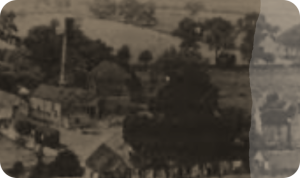
1864
The first Company dyehouse and bleach house was built in Radford, Nottingham. This further enabled quality control of the production.
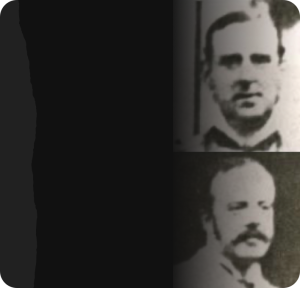
1890
The Sisson Bothers, James and Robert, like their father before them, had worked for the company since they were 9 years old.
Sibling rivalry raged, and the Brothers competed to find the perfect woven fabric. Both were spinners of great ability.
It was to be unique and possess all the qualities which Henry Ernest sought.
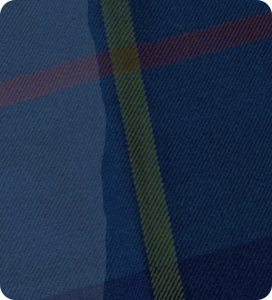
1893
On 23rd November 1893, the board of William Hollins & Co agreed that £2,000 be risked on the cloth trade. This gave birth to a fabric that became ‘Viyella’, the World’s first branded fabric.
The name ‘Viyella’ originates from Via Gellia, the leafy Derbyshire valley where one of the mills was located. Three years previously, William Hollins had bought a factory in Via Gellia, near Matlock in Derbyshire. The locals pronounced the valley ‘Vi Jella’ and it is from this Valley that Viyella derives its name.

1894
Henry Ernest sold cloth direct to the Retailers in Britain, calculating that the fullest spectrum of designs possible would thus reach the Consumer, unimpaired by the limitations of cautious Wholesalers. Overseas markets, particularly the English-speaking countries, were supplied with cloth for the first time and the very ‘Englishness’ of Viyella assured the Company of international sales from the outset. All Companies using Viyella were required by Hollins to label the garments with the Company’s brand.

1894
Henry Ernest had advanced the ‘complete control principle‘; operating a vertical operation of production from fibre, dying, spinning and weaving, where the highest level of quality control could be maintained.
Quality would not be compromised…. a slogan which was later widely to be known as the ‘Viyella Standard’. Henry sold directly to the Retailers, ensuring the fullest spectrum of colours and designs possible were on offer to the consumer.

1899
The London Office was established. Viyella hosiery was launched.

Early 1900s
Viyella became the aspirational clothing for a wide range of sporting activities, including shooting, fishing, cycling and tennis. This was not only due to the aesthetics and softness, but also due to the uniqueness of the fabric’s properties:
‘Cool when it’s hot, warm when it’s not‘
This slogan was to become a Viyella strapline. Quote from Queen Alexandra:
‘Lives there a maid or matron in the land that has not profited by the charms and advantages of Viyella’
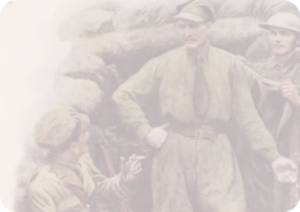
1911
Tropical Viyella & Aza were added to the Range. Clothes began to assume Military Line Service Shirts – Khaki Viyella – Men that went to war in South Africa and later Europe wore Viyella shirts.

1930s
Deputy Chairman, Edward Herbert was recognised as the natural progressor and takes the Company’s helm. Herbert widely developed the Brand’s International strategy. His administrative talents, modern management techniques and understanding of Viyella’s brand worth were to make an enormous contribution in decades to come. Herbert developed the International business, capitalising on its ‘English Appeal’ to such success, Countries such as New Zealand claimed that a third of the population was wearing Viyella!
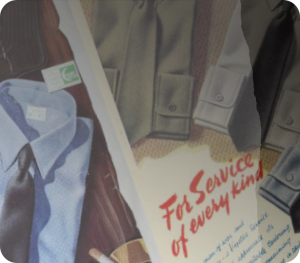
1940s
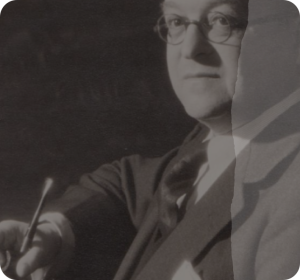
1961
Viyella received the ultimate accolade of the British Establishment – Sir Edward Herbert OBE received the Award of Her Majesty the Queen’s Royal Warrant – the seal confirming the use of the manufacturer’s product by the Royal Household.

1979
The Queens Award for Achievement in Export and Technology was received.
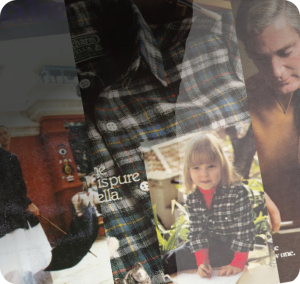
1990s
AW24
To help celebrate the 240th Anniversary of the origins of Viyella, we continue our proud tradition of innovation by introducing an 80% Cotton/20% Wool “Ivy League” silhouette into our A/W’24 Shirt Collection. Viyella was synonymous with the supply of fabric to some of the most important North American manufacturers of “Ivy League” shirts during the mid-20th Century and staying true to authenticity, this new addition to our Collection will resonate with an enthusiastic, loyal audience.
Viyella’s rich heritage has been embraced by one of London’s most exciting bespoke Shirtmakers – Jake Wigham, based in Chiltern Street. A collaboration between Viyella and Jake’s London has seen a Capsule Collection of 80% Cotton/20% Wool shirts launched in December 2023 to resounding success, with Designs selling out within 24 hours of launch.
With a determination to continue to offer fabric innovation, Viyella launched a Formal Shirt Collection in 2022, developing a ‘Single 70s’ 100% Cotton shirt. The result is a luxurious “silk-like” touch across a Collection of Plain, Stripes and Checks, perfect for today’s market. Of course, Viyella Fabric’s versatility is legendary, and we now offer 80% Cotton/20% Wool Handkerchiefs, handmade in the U.K. and presented in boxes of 3. The same fabric is also used to manufacture P.O.S. Teddy Bears, which look fantastic as part of your Viyella display.
